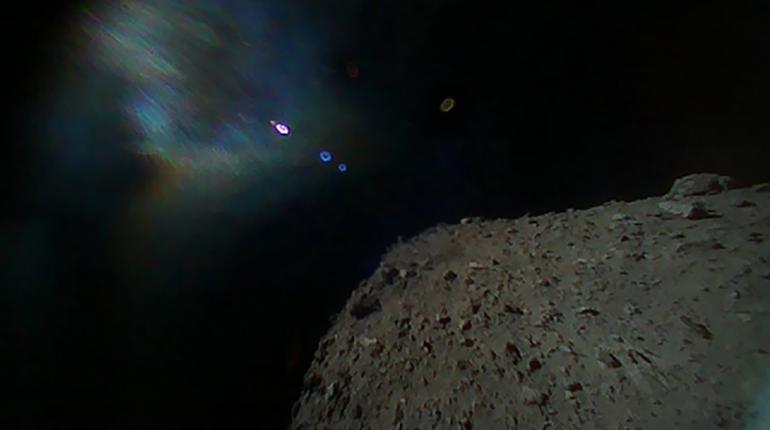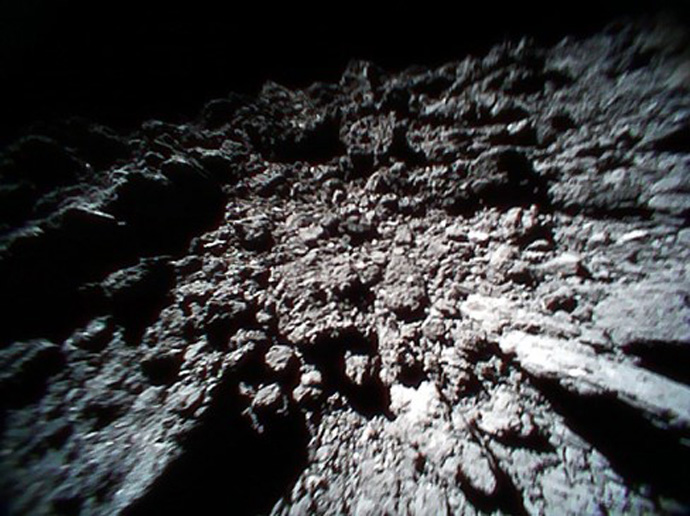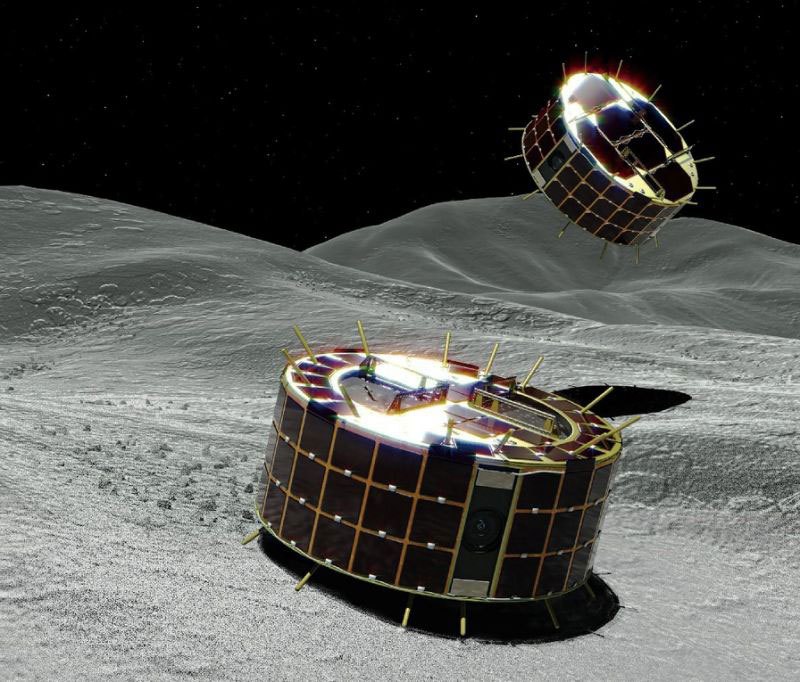
The Japanese Hayabusa2 rovers have started to explore asteroid Ryugu. The two tiny robots have become the first rovers to touch down on an asteroid’s surface.
We’ve sent rovers to explore neighboring planets and moons, but we can now check another near-Earth target off of the list. And also, for the first time ever, we have video footage from the surface of an asteroid flying through space, thanks to Japan’s Hayabusa 2 spacecraft and its tiny hopping rovers, and this is just the beginning as these robots investigate the potential origin of life in our solar system.
Rover-1B succeeded in shooting a movie on Ryugu’s surface! The movie has 15 frames captured on September 23, 2018 from 10:34 – 11:48 JST. Enjoy ‘standing’ on the surface of this asteroid! [6/6] pic.twitter.com/57avmjvdVa
— HAYABUSA2@JAXA (@haya2e_jaxa) September 27, 2018
Hayabusa2, which has been hovering roughly 20 kilometers (12 miles) above the asteroid since it arrived in June, descended to just 55 meters (180 feet) above Ryugu to deploy the rovers from its MINERVA-II lander. Now that they’re operational, the two will spend their time investigating Ryugu’s surface for clues about its formation, evolution and ultimately the state of our early solar system.

The surface explorers have taken numerous images of the terrain, including close-up shots of the terrain and even one that shows rover 1A’s antenna casting a shadow.

The two robots will use their seven cameras to study Ryugu’s estimated 920-meter (3,020-foot) surface and ultimately create a 3D composite image of the asteroid. An up-close view of its surface will also help researchers figure out the conditions that the asteroid once formed in, and how much of a cosmic beating it’s taken during its evolution.






















